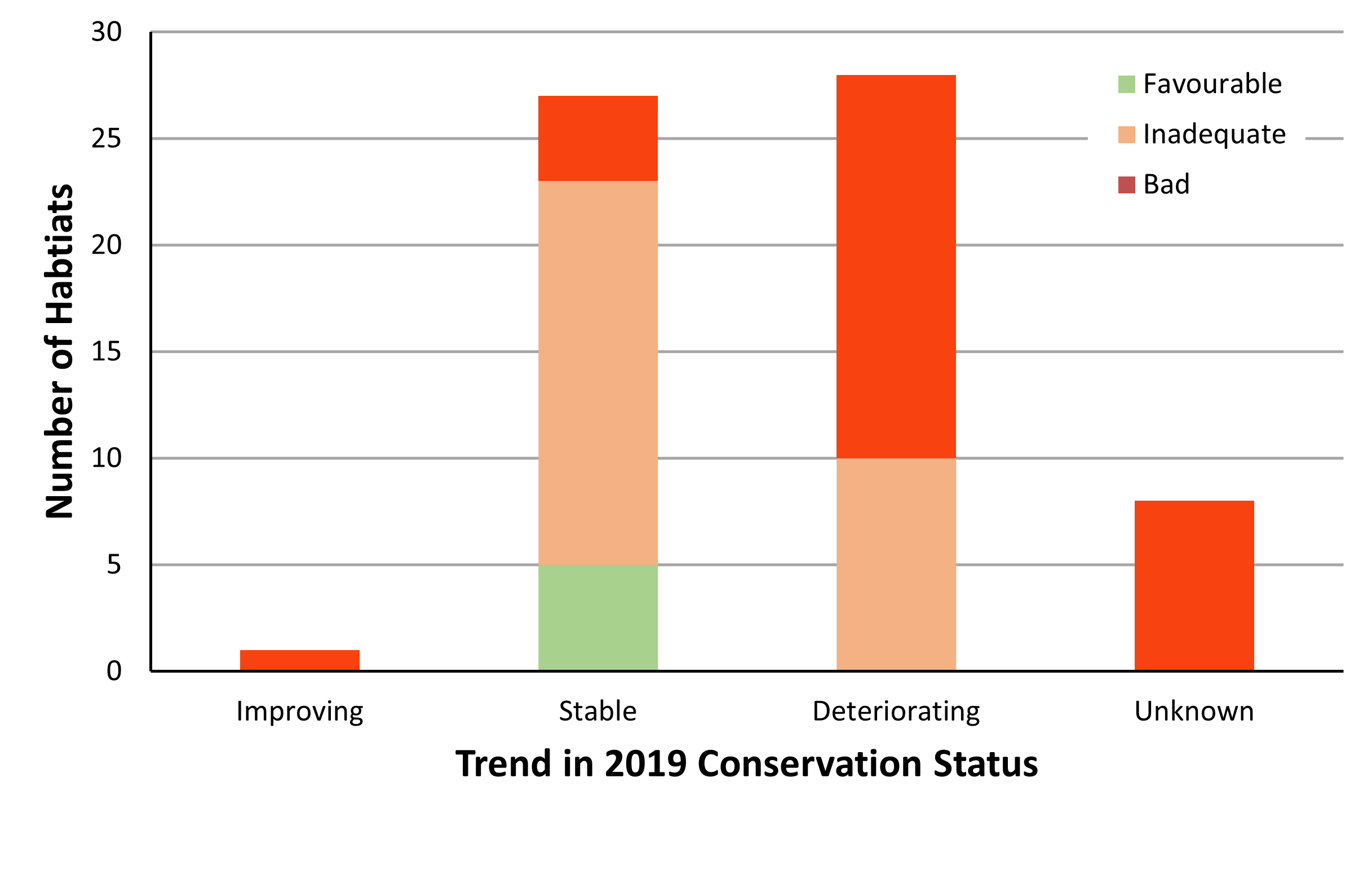| Current status | 2019 |  |
| Short term status | 2013 - 2019 |  |
| Long term status |  |
Click on the charts below in order to see the full resolution versions.
The EU Directive on the Conservation of Habitats, Flora and Fauna (92/43/EEC), commonly known as “the Habitats Directive”, came into force in 1994 and was transposed into Irish law in 1997. It has become the one of the most important pieces of legislation governing the conservation of biodiversity in Europe. The main aim of the Habitats Directive is to maintain or restore favourable conservation status (FCS) of the habitats and species listed on the Directive. Measures taken to contribute towards achieving FCS include designating key sites as Special Areas of Conservation, and by introducing protective measures for species considered at risk.
Under Article 17 of the Habitats Directive, each member state is obliged to report to the European Commission on the status of listed habitats and species every six years. In 2007, 2013 and 2019 Ireland submitted assessments of conservation status for all habitats listed on the Directive that occur in Ireland. The current status has been derived by the National Parks and Wildlife Service using the best available information on the range, area, structure, threats and management of the habitat, although in some cases there are inadequate data to make a precise statement on conservation status. In 2019, 9 habitats had favourable assessments, 27 inadequate, and 23 bad.
The Irish Article 17 report to the European Commission can be found here:
http://www.npws.ie/publications/euconservationstatus/
https://www.npws.ie/publications/article-17-reports
More information on Article 17 reporting can be found here:


